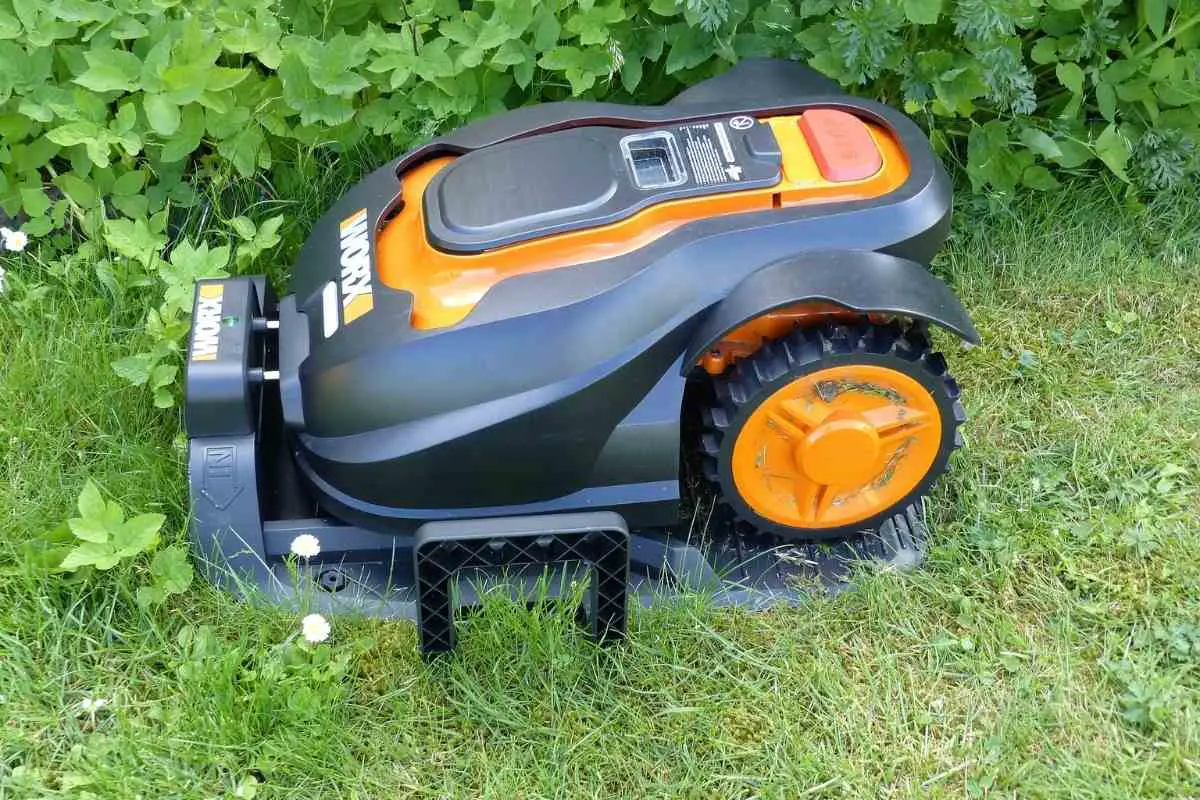A robotic mower is not only an ultra-convenient way of getting a significant proportion of your yard work done but can also make a transformative difference to the health and quality of your lawn.
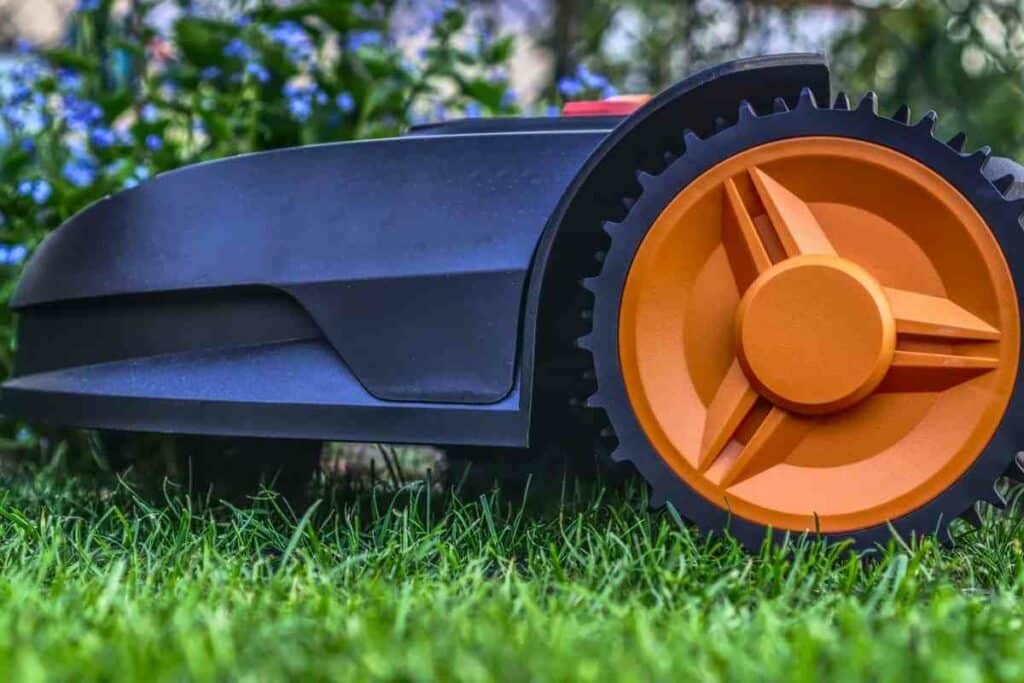
Regular mowing is beneficial, but by paying attention to the time of day the mower operates and not just the frequency your robot mows, you can achieve some outstanding results with your lawn.
In This Concise Article – We explain the best time of day to have your autonomous mower out and about cutting grass, including some helpful information on how grass grows, when NOT to mow, and the best conditions for a perfect cut!
Is your robotic mower cutting at the right time of day for a healthy lawn?
Though they do a great job, robotic mowers cannot solve all the problems that can affect your lawn.

Even with the regular trims and nutrient-rich mulching action, your lawn may still have dying grass, thatch, and other issues.
If you are revisiting the drawing board on lawn health, number one on your agenda should be the time of day your grass is being cut.
Cutting grass in hot, dry weather is no fun for your lawn
Frequent cutting of lawns in hot dry weather wreaks havoc, despite the best efforts of your helper robot.
Professional gardeners and landscapers strongly advise avoiding lawn mowing between 10 am and 2 pm, especially in the height of summer.

This is the hottest part of the day and the cut grass will lose large amounts of moisture.
At this time of maximum sunlight, the lawn is also working hard photosynthesizing and will automatically protect its water supply as it generates its food from sunlight.
As the cut leaf is no longer intact, the entire grass blade becomes weakened and stunted and may die off leaving you with a thinned lawn.
The best times of day to schedule your robotic mower to run
Just a few tweaks to your robotic mower schedule could leave you with a fabulous lawn.
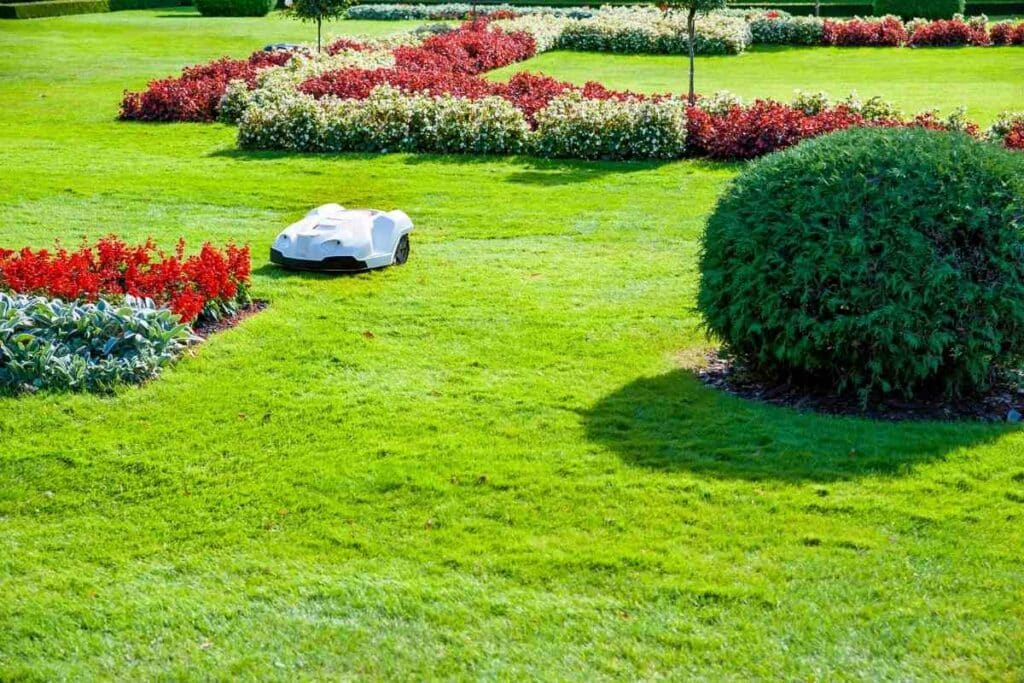
Avoiding hot and harsh sunlight gives the grass time to regroup after it is cut.
Here are some of the best times of day to program your robotic mower to operate.
Aim for between 8 am and 10 am for the perfect cut
In the morning as the dew is drying off, conditions are great for cutting grass.
With more humidity and cooler temperatures, the cut grass is going to keep its moisture and has time to recover without being stressed by peak sunlight.
You could also get great results by cutting your lawn between 2 pm and 4 pm
Late afternoon is a great time to cut grass for optimum lawn health.
The sun has passed it peak and the evaporative process of transpiration is waning, meaning that moisture will stay in the grass blades, strengthening them.

As the afternoon progresses, things cool down making the work of your mowing robot easier on your lawn.
Even as late at 4 to 6 pm will provide the grass blades with ample time to recover from the mowing before it gets cold at night and fungi and other diseases can set in.
And if it rains…
The best time to cut the grass when there is rain around is after the grass is completely dry. Therefore, most robot lawnmowers come with onboard rain sensors that pause cutting until the rain stops.
Even with the exemplary cutting performance of a robotic mower, slippery wet grass gets cut unevenly and may have an irregular finish when dry. However, you can override the rain sensor and get your robot (which is waterproof) to continue its scheduled mowing in the rain.
There is more clumping of the grass clippings needed to mulch the lawn as well.
Old school tips for taking care of your grass with a robotic mower
Treating your grass the right way is the best investment you can make in grass growth that is thick and healthy and resilient in sustained dry weather.

Here are some old-school lawn care tips that can make all the difference for your lawn.
Adjust the mowing frequency of your robotic mower to rate of grass growth
Gass takes three to five days to grow just over an inch.
A mowing frequency of once every four days is more than enough to maintain your lawn.
Even though grass growth increases in the summer months, don’t over-mow as this can expose the soil causing the lawn to lose a vital moisture reserve.
Get the cutting height just right for healthy grass
Deep dive into your robotic mowers settings to make sure you keep your grass at just the right height.
For Most Lawns: A blade length of 2 inches (5 cm) is ideal with mowing becoming due when blade length hits 3 inches.
At most, aim to take off a third at most from the blade length of the grass.
Don’t cut the grass too short
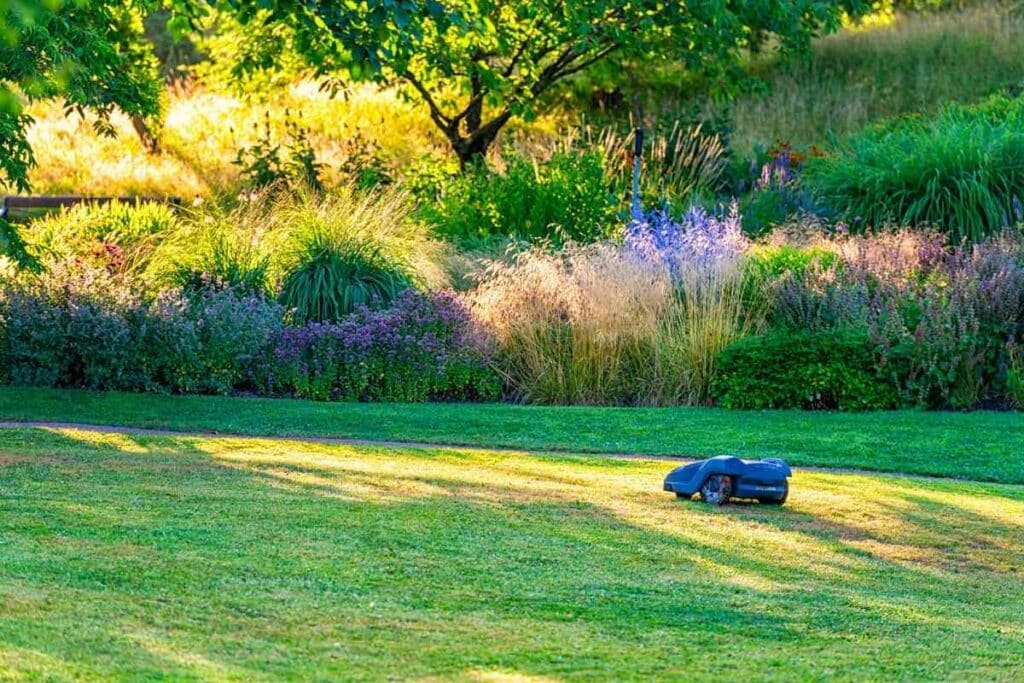
Very short grass loses its moisture rapidly eventually turning yellow and brown in hot weather.
This is a sign to lengthen the time between mowings so that the grass can recover.
After mowing don’t walk on the grass
After your robotic mower has completed its work, let the lawn recover and strengthen itself by staying off the grass for 24 hours.
You may also want to water and feed the lawn the following day.
Keep your robotic mower blades sharp
Blunted blades on your robotic lawn mower will damage the grass, increasing the potential for disease in the ripped grass and die-off of your lawn.
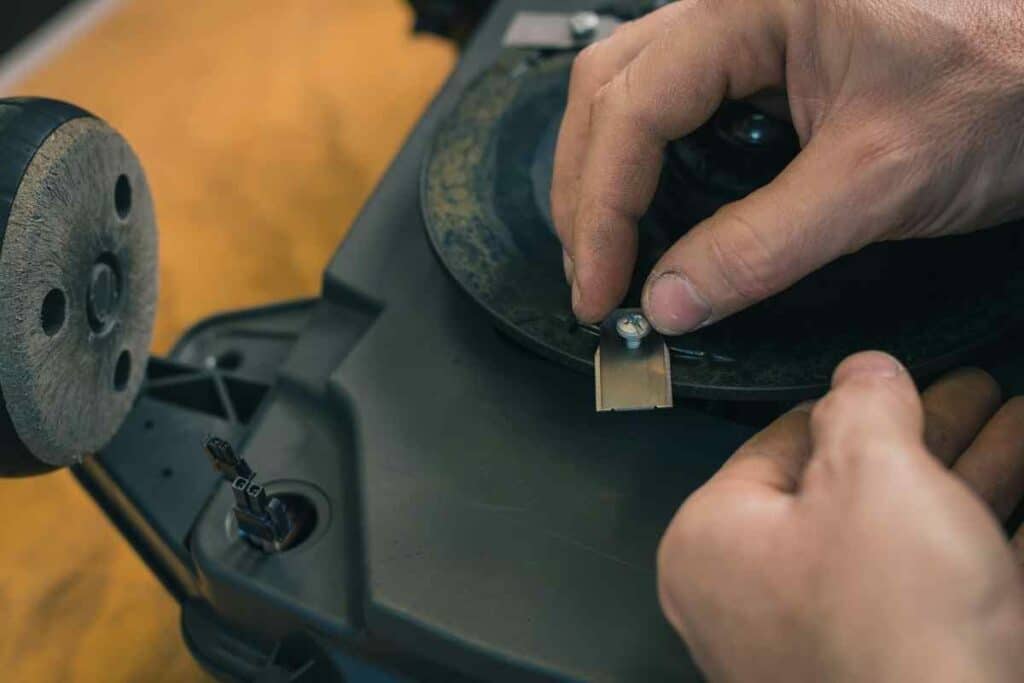
Robotic mower blades should be sharpened or replaced every 8 weeks at the height of the mowing season.
Remember that your lawn will hibernate
It is unlikely that you will need to mow your lawn all year round if you are in a temperate climate.
In late autumn and winter when temperatures fall below 50 degrees Fahrenheit (10 degrees Celsius), you’re safe to hit the pause button on your robot mowers schedule and resume in the spring when grass growth resumes.
Rounding up
As you can see, there is a lot more to maintaining a lawn with a robotic mower than simply cutting grass.
With care and attention and some thoughtful programming of your autonomous mower, you can enjoy a healthy, well-nourished lawn that will thrive all year round.
